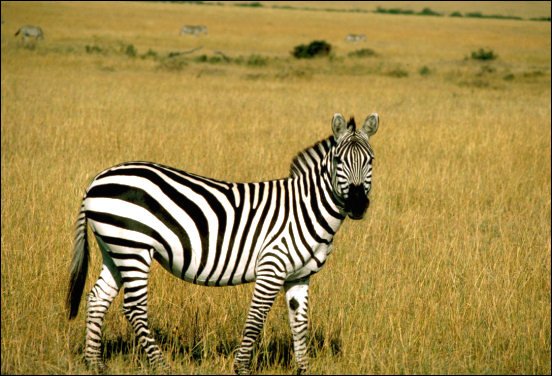

We often make assumptions based on our experiences, and perhaps this is the only rational approach. Nevertheless, experience may well lead us astray. We know that several species of horses lived in North America up to the end of the ice age, when they abruptly disappeared from the continent. In the imagination of most of us, these horses look like the common horses we're all familiar with. We can assume that some extinct species did look like the mustangs of our mental picture, but quite possibly some did not. Why not? Because, according to skull and dental characteristics, some rather clearly were zebras.
The modern-day species of zebras are, as we well know, clothed in
dramatic stripes. Based on this limited sample, perhaps the coloration always goes with
zebras. On the other hand, just maybe the stripes are a happenstance, an adaptation for
the habitat of these particular species. Since it's unlikely we'll ever know
the true colors of our extinct zebras, we might as well dress up our mental images
boldly—stripes it is!

Listen to the Audio (mp3 format) as recorded by KTEP, Public Radio for the Southwest.
Contributor: Arthur H. Harris, Laboratory for Environmental Biology, Centennial Museum, University of Texas at El Paso.
Desert Diary is a joint production of the Centennial Museum and KTEP National Public Radio at the University of Texas at El Paso.

Grant's Zebra, a modern African species. Photograph by Gary M. Stolz, courtesy of the U.S. Fish and Wildlife Service.
<<img class="rule" src="ruleahh.gif" width="95%" height="3" alt="rule" />